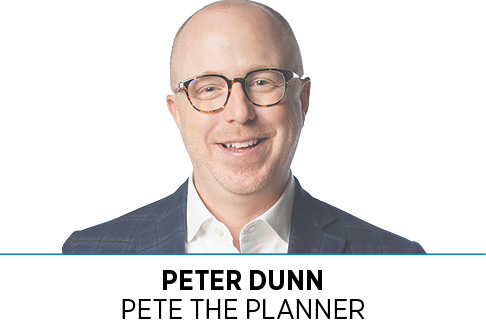Subscriber Benefit
As a subscriber you can listen to articles at work, in the car, or while you work out. Subscribe Now Dear Pete:
Dear Pete:
My husband and I don’t see eye to eye on how we should spend our $200,000 household income. He’s focused on leisure and I’m focused on saving for the future. We both work and earn about the same amount of money, and we’re both 47 years old. Can you provide me with spending guidelines to help make my case?
—Julie
Before we get started, please understand this is just a guide. My friend Kelsey, a personal trainer, once sent me a menu of what I should eat in a week. I took one look at the six-egg omelet every morning and decided I would attempt a modified version of her menu. That’s what I want you do. Take a look at what I consider to be perfect and then attempt what seems doable for you.
What’s 200 minus 38? Correct, 162. We’re shaving $38,000 right off the top by having both you and your husband max out your 401(k)s with $19,000 deposits each. If you’re making $200,000, especially in the Midwest, you should absolutely max out your retirement accounts. Not only will this help provide stability for you in the future, but it will give Mr. Julie less leisure loot.
This leaves you with $162,000 for everything else. After your share of your health care premium and filling Uncle Sam’s outstretched hand, your monthly take-home pay is $10,377.
We’ve tackled three pretty major obligations so far: retirement, taxes and health care. And you still have more than $10,000 per month to build a life around.
In a perfect world, you allocate about 30% of your take-home pay ($3,113) toward a 15-year mortgage. Yes, that will limit the amount of home you can buy, and yes, that’s my intention. A bank will loan you substantially more money, based on a higher percentage of your monthly income, and you can stretch that even further by securing a 30-year mortgage, but I’d rather you not. You can also stay at an all-you-can-eat buffet for four hours, but you shouldn’t.
Pushing the limits of housing affordability will compromise the rest of your financial life, as it drives up utility, maintenance, taxes and insurance expenses. If you have a 30-year mortgage, especially if it won’t be paid off before you retire, I’d like to see the payment closer to 25% of your take-home pay.
Even at your income range and the discretionary income it affords you, I have a hard time with you spending $1,000 per month on transportation. Technically, that’s what I would typically allow for someone earning $200,000 per year, but I can’t bring myself to bless that decision. While it’s lovely to be able to spend 15% of your income on transportation, I don’t find it prudent in all cases, especially yours.
Feel free to spend $1,245 on food, which is 12% of your take-home pay. You don’t have to, of course, but roughly $300 per week for food is a delightful thought.
You do need to allocate at least $1,037 (10% of your take-home pay) to either consumer debt reduction or additional savings and investing. Don’t ignore this request. It will go a long way in breaking your dependence on your income when you prepare to retire.
If you’ve played your cards right thus far, you should be able to tackle your utilities for $1,037 per month as well. This includes digital services, too, such as the internet and smartphone plans. However, if you pushed the limits on housing, you might struggle to keep your utility costs below this 10% marker.
Next you will find a series of categories in which you can feel free to spend 5% of your income, or $515 per month each. They include entertainment; holidays and gifts; clothing, medical and health; and your community. You can help create the type of community you want to live in by allocating your resources, both time and money, to it. No matter how you shape it, if you’re not giving to your community, then you’re taking from your community.
Finally, you have $311 leftover for everything else. You know, miscellaneous. There’s no doubt I’ve skipped some categories you cherish, and may even need, such as child care. But that’s the glory of budgeting. You simply need to cut back on the other categories I presented, and then add in whatever needs your money more.•
__________
Dunn is CEO of Your Money Line powered by Pete the Planner, an employee-benefit organization focused on solving employees’ financial challenges. Email your financial questions to askpete@petetheplanner.com.
Please enable JavaScript to view this content.
